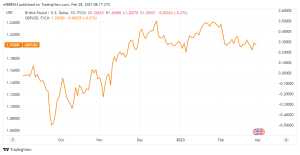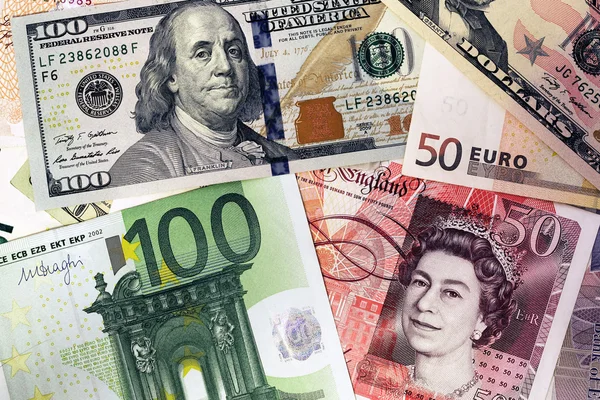On Monday, the GBPUSD pair had a strong short-covering move, snapping a three-day losing skid to a theoretically crucial 200-day Simple Moving Average (SMA). The pair gained 140 pips intraday as a result of a variety of factors.
With US bond rates falling, the risk-on urge drove some USD profit-taking and provided support.
The powerful advance up was aided by a minor US Dollar decline from a seven-week high, as well as a Brexit breakthrough. Falling US Treasury bond rates and the risk-on sentiment encouraged profit-taking in the safe-haven Greenback, which lost ground further in response to mixed US macro data. According to the US Census Bureau, headline Durable Goods Orders declined by 4.5% in January, following a 5.1% increase the prior month.
Nevertheless, orders excluding transportation goods increased 0.7% in the reported month, compared to a little increase in the previous month. A 0.1% increase is expected. The US Pending House Sales increased the most in two and a half years, but they failed to please the Dollar bulls.
A new UK-EU agreement for Northern Ireland bolstered the pound and backed the move.
The British Pound, on the other hand, gained ground when UK Prime Minister Rishi Sunak and European Commission President Ursula von der Leyen agreed new trade regulations for Northern Ireland following Brexit. In addition, increased expectations on more rate rises by the Bank of England (BoE) supported the Sterling Pound. Nevertheless, the GBPUSD pair struggles to capitalize on the gain and falls during Tuesday’s Asian session. Prospects for additional Fed policy tightening and an approaching recession are boosting Dollar demand and acting as a headwind.
Hawkish Fed predictions and recession worries boost Dollar demand while limiting any major gain.
The markets appear to be confident that the US In the face of persistently rising inflation, the central bank will maintain its hawkish approach. The increased US PCE Price Index reported on Friday confirmed the projections, indicating that inflation is falling slower than expected. Apart from that, concerns about economic headwinds caused by fast rising borrowing prices and geopolitical tensions dampen any confidence and favor the Greenback.
As a result, before putting aggressive bullish wagers on the GBPUSD pair, it is wise to wait for substantial follow-through purchasing.
GBPUSD Technical Outlook
Technically, any future move up is more likely to encounter tough resistance at the 1.2100 level. The next key obstacle is located at the 50-day SMA, now around 1.2145, and if overcome convincingly, should pave the way for more gains.
The GBPUSD pair might gain pace and retake the 1.2200 level before climbing to the 1.2265-1.2270 zone. Any follow-through purchasing will indicate that the recent pullback from the 1.2450 supply zone, or the highest level since June 2022, has run its course, paving the door for another near-term appreciating rise.

In contrast, the psychological level of 1.2000 currently safeguards the immediate downside. Any additional slide may find solid support and be restricted at the 200-day SMA. Support is now located in the 1.1925-1.1920 range, close to the monthly low. Failure to defend the support levels might expose the GBPUSD pair to a retest of the YTD low, which was reached in January at 1.1840.
A convincing break below the latter will complete a bearish double-top pattern that formed in the 1.2445 region, paving the way for more losses.









